Combat aircraft. When down to the whole world ...
The bomber from the Ju-86 failed. The plane became obsolete before it dropped the first bombs from its compartments back in Spain, it was sold for export quite normally, but in the Luftwaffe it didn’t go in for many reasons, which there is no sense to disassemble.
The fact is that the Ju-86Z (from Zivil - civilian), a 10-seater passenger aircraft, which became the progenitor of military modifications, is so different from our hero that it simply does not make sense to follow the entire development of the aircraft. Let's just say: Ju-86P was just actually a different aircraft. With completely different tasks and opportunities.
The military life of the Ju-86 bombers of the A, B, C, D, E and G series was more than short. By the beginning of World War II, the Luftwaffe generally had one single unit armed with these aircraft.
But the fate of the scouts of the P and R series was completely different.
It all started with a tacit competition of German and Soviet designers in the development of the stratosphere. That is, the goal was to create an aircraft capable of climbing as high as possible.
In the USSR, the BOK team (Bureau of Special Structures) worked quite normally on stratospheric aircraft under the guidance of the most talented designer Vladimir Antonovich Chizhevsky.
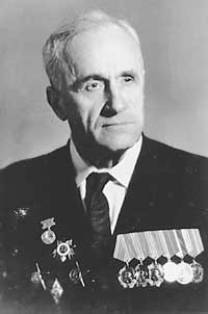
The team developed the gondolas of the first Soviet stratostats “Osoaviahim-1” and “USSR-1”, aircraft BOK-1, BOK-5, BOK-7, BOK-11, BOK-15. But the aircraft did not go into the series, despite the fact that in 1940 the BOK-11 was built in two copies and successfully passed the tests.
Preparations were made for a long-range high-altitude flight, but in the pre-war situation such flights could no longer take place. BOK was included in the OKB P.O. Sukhoi.
But Hugo Junkers beat the competition and kept all the best practices in the strictest confidence. By the way, it was precisely the moment that the Germans showed nothing of their achievements to the Soviet delegations that played an important role in the fate of the stratospheric BOK aircraft, which served as an excuse for stopping work on the BOK-11.
Yes, the “100” high-altitude fighter with pressurized cabs was also sent to the scrap.
But quietly, the Germans continued to work on a super-high-altitude aircraft, and that's what they ended up with.
Firstly, it finally turned out an engine that could be used in such aircraft. This is the Junkers Jumo-207 diesel engine with two centrifugal superchargers: the first with an exhaust drive, the second with a mechanical drive and with an intercooler.
At the same time, the Junkers worked out a program for high-altitude flights using pressurized cabins.
Then began the creation of the aircraft. Today there are several versions on the topic of which model of the 86th made the modification. There are opinions that from the “D” series, I adhere to the opinion voiced by Viktor Nikolayevich Shunkov that the Ju-86P was created on the basis of the Ju-86G, which was just different from other models with the cockpit forward-shifted and the increased glazing of the pilot's and navigator's cockpits. Yes, the Ju-86G was a continuation of the work on the Ju-86E.
On the basis of the Ju-86G, they made the Ju-86P, inscribing a two-person pressurized cabin in the bow. In fact, a new nose was made with special glazing from double Plexiglas panels with air dried between the glasses.
The pressure in the cabin was maintained equivalent to a height of 3000 m, air pressurization was taken from the left engine. Access to the cabin was very peculiar, through the lower hatch.
The first prototype of the Ju.86P V1 took off in February 1940, and a month later the V2 circled. During the tests, both aircraft with a pair of Jumo 207A-1 diesel engines rose to a height of over 10 m. On the third prototype with a wing of an increased area, the Ju-000P could fly 86 m for more than 11 hours.
Representatives of the Luftwaffe liked the test results so much that they ordered 40 cars in two versions.
The first variant of the Ju.86P-1 was a super-high-speed bomber capable of carrying 4 bombs of 250 kg or 16 bombs of 50 kg each.
In addition to bombs, the Ju-86P-1 was armed with a remotely controlled installation with a MG-17 rifle-caliber machine gun. Not very luxurious weapons, but the very essence of using a bomber somehow did not imply air battles at all.
The combat flight plan was as follows: the plane took off, then climbed 11 m. This altitude was to be reached after 000 minutes of flight. After that, the flight continued at this altitude, at a cruising speed of 45 km / h.
Climbing up to 200 m began 12 km from the target. This altitude was reached 000 km from the target. Then began a decrease in a sort of half-diving to a height of 100-9500 meters, from where the bombs were dropped. Then again followed a leisurely climb of 10000 meters and return to the airfield.
The fuel supply consisted of 1000 liters, which ensured a four-hour flight.
In general, even considering the excellent German sights and optics, we will not talk about how accurate the bombing was from such a height. It was work on the areas "somewhere", nothing more.
The Ju.86P-2 scout, which became the second option, was a more interesting machine.
The armament of the scout consisted of three automatic cameras. He did not need a machine gun at all, since not a single fighter of that time could even theoretically rise to the working height of this aircraft.
As for the anti-aircraft artillery, the ground observation posts had to somehow manage to somehow detect a plane flying at such a height.
In the summer of 1940, one of the prototypes in the test rank entered the intelligence unit of the Luftwaffe main command and was immediately aimed at reconnaissance of objects in Great Britain. In the first flight, the Ju.86P-2 reached an altitude of 12500 m and returned undetected.
Several scouts concentrated in the 2nd Squadron and in the same year they often appeared over the base of the British fleet in Scapa Flow. From that moment in Germany, if weather conditions allowed, they knew about the movements of the British fleet, almost all.
The British were brutal, but so far they could not do anything and were frantically looking for methods to combat Ju.86P. Meanwhile, Ju.86P-1 bombers began to send greetings to British cities, but this, we rightly note, were intimidation actions, nothing more.
The air disgrace (from the point of view of the British) continued until August 1942, when the hastily modified Spitfire of the 6th series, as light as possible, with an extended wing and a pressurized cabin allegedly shot down Ju.86P-2 at an altitude of 12 meters.
Understanding perfectly what this hastily cobbled-up interceptor was, I express my distrust of this information.
I must say that the pressurized cabin of the "six", or "type 350", caused a lot of complaints. If in fact, then it did not give much benefit to the pilot, maintaining the pressure in the cockpit only 0,15 atmospheres higher than overboard.
There were complaints about the compressor, which drove oil fumes into the cab. The rubber seals through which the cables passed made control of the aircraft very difficult. The lantern in flight could not be opened, so leaving the plane in the event of an accident was the same test for the nerves. But most importantly, the ceiling of the Six did not exceed 12 m, and even then, under ideal conditions.
For the entire 1942th year there was only one case when the interceptor was able to open fire on Ju.86P, located above it, but at the same time lost speed. The Junkers calmly with a decline left Spitfire.
In 1942, the “six” was transformed into the “seven”, equipped with an injection system of liquid oxygen into the engine. This raised the ceiling by about 600 m and speed at an altitude of 65-80 km / h. But the Junkers did not stand still, having adjusted the alteration of Ju.86P in Ju.86R, which had higher characteristics.
In general, the British defeated the super-high war with a bang. Especially when Ju.86R appeared.
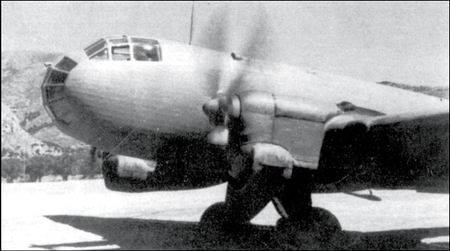
Ju.86R was also produced in two versions, a scout and a bomber, but a scout took root again.
The aircraft had a wing of even greater scope (32 m), high-altitude Jumo 207В-3 engines with a capacity of 1000 hp, of which “at all” 12 hp remained at an altitude of 000 meters. The engines were equipped with a GM-750 nitrous oxide injection system.
All this provided the opportunity to fly at altitudes of up to 14 meters. The fuel supply (000 liters) was enough for seven hours of flight at a working altitude. The British had nothing to oppose, and Ju.1935 fearlessly flew over the territory of Britain.
But why spare the British if flying over the territory of the USSR was even easier? Which, in fact, the Germans did. With anti-aircraft artillery and radars, everything was much more sad than with the British, about high-altitude interceptors it’s just worth keeping silent.
Yes, our intelligence still managed to overcome all the barriers of German secrecy and still obtain information about Ju.86P. All data was transferred to the Deputy People's Commissar for Experimental Aircraft Engineering and in parallel to designer A.S. Yakovlev.
That is, in 1941, almost a year after the start of the use of aircraft, we learned that the Germans still have a super-high intelligence. But our industry could not provide real opposition.
But measures, albeit on paper, the government took. TsIAM and various aviation Design bureaus, especially those specializing in the creation of fighter jets, were supposed to accelerate the installation of turbocompressors, which increased the altitude of the engines, and submit the aircraft for testing in the shortest possible time.
But alas, we were not able to create normal turbochargers. The level of development of industry was not one at which one could create such a simple and at the same time complex device.
And our VNOS services had only to fix the numerous Ju.86P flights over our territory. Including over Moscow.
Today on the Internet there are many wonderful German snapshot cards made with Ju.86P cameras. It is hard to say how much it cost us in that war.
The picture is clearly drawn by a document dated 1943. On August 23, from the headquarters of the Western Front of Air Defense signed by the commander of the troops M.S. Gromadin, a member of the military council, Major General Orlov and the chief of staff of Nagorny, a report was sent to the commander of the artillery, Marshal N.N. Voronov and People's Commissar A.I. Shakhurin :
An enemy aircraft was detected at 7 hours 42 minutes in the Izdeshkovo area and, following the route Vyazma - Kubinka - Zvenigorod - Chkalovskaya - Moscow - Gzhatsk, it left the airborne landing system in the Izdeshkovo area (40 km west of Vyazma).
The enemy was in the fire zone and in the Moscow region for 1 hour 30 minutes (from 8 hours 40 minutes to 10 hours 10 minutes) and three times passed over the city center.
To intercept the enemy, 15 fighters from the Central and Kubinka, Lyubertsy, Inyutino, and Vnukovo airfields were simultaneously lifted, three of them Yak-9, two Spitfire, Aerokobra and MiG-3, and six Yak-1.
Of all the fighter jets raised, only one - Spitfire, piloted by the senior lieutenant of the 16th IAP Semenov, climbed 11500 m and fired at the enemy from cabling, being 500 m below the enemy and 200 m behind. The pilot Semenov used up 30 shells and 450 rounds of ammunition, after which the gun and machine guns refused due to icing. The enemy fired back from the starboard side and from below tracer bullets.
In the Moscow region and on the way back to Mozhaisk, the enemy was chased by pilots:
12th GIAP - junior lieutenant Nalivaiko (Yak-9), who scored only 11100 m;
562nd IAP - Polkanov and Butslov (Yak-1), who scored 9500 m;
28th IAP - Abramov and Evdokimov (“Aerocobra”), who scored 9000 m;
565th IAP - Krupenin and Klimov (MiG-3), who scored 10800 m.
Due to the large difference in altitude, all pilots did not fight. Anti-aircraft artillery fired on the enemy, due to the inaccessibility of the height ...
The fighters available in the Special Moscow Army Air Defense could not gain the necessary height for the battle. The armament of the fighters turned out to be unprepared for firing at high altitudes at low temperatures.
The possibility of the enemy dropping small bombs during similar unpunished flights over Moscow is not ruled out.
Despite the fact that the enemy has been conducting unpunished reconnaissance of Moscow at a high altitude for more than a year, the question of high-altitude fighter aircraft for the capital’s air defense has still not been resolved ... "
Enough, isn't it?
The unpunished flights of the Ju-86R over the capital and other cities continued until June 1944. At the same time, the Soviet air defense failed to bring down any of them.
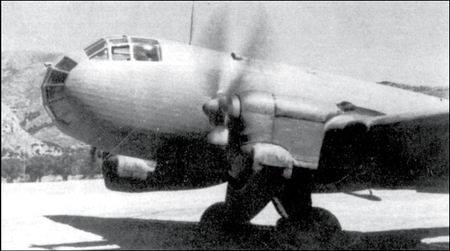
On the Western Front, the Ju-86R lost their invulnerability, which gave them an advantage in height in mid-1943. On July 2, two Spitfires Mk.IX and several Spitfires Mk.VC at an altitude of 13 m (reliably) intercepted and attacked the Ju-400R N.86 “860292U + IK”.
The plane received a series of hits and, catching fire, abruptly went down, and then at an altitude of 9400 m it fell apart. Both members of his crew died.
In fact, after 1944, the Ju-86R was no longer used due to the appearance of real British interceptors and the termination of the production program for these aircraft. That is, the available aircraft had already exhausted their resources, and instead of new ones, German industry was producing fighter aircraft at an accelerated pace.
However, we can say that the Ju-86P and R completed their mission by shooting a huge number of square kilometers of theaters of military operations, a huge number of maps were made based on the images, and in general, intelligence is intelligence.
Until 1943, when real interceptors appeared, the Ju-86r and R were unique machines that performed their work with impunity. Decent aircraft, which was very difficult to find a council.
LTX Ju.86R-1:
Wingspan, m: 32,00.
Length, m: 16,50.
Height, m: 4,10.
Wing Area, m2: 118,60.
Weight, kg:
- empty aircraft: 7000;
- normal takeoff: 9 410.
Engine: 2 diesel engines "Junkers" Jumo-207В-3 х 1000 hp
Maximum speed, km / h: 360.
Cruising speed, km / h: 285.
Practical range, km: 2.
Practical ceiling, m: 14 000.
Crew, people: 2.
Armament: one machine gun MG-17.
In total, 40 units of Ju-86R-2 and 22 units of Ju-86R-1 were produced.
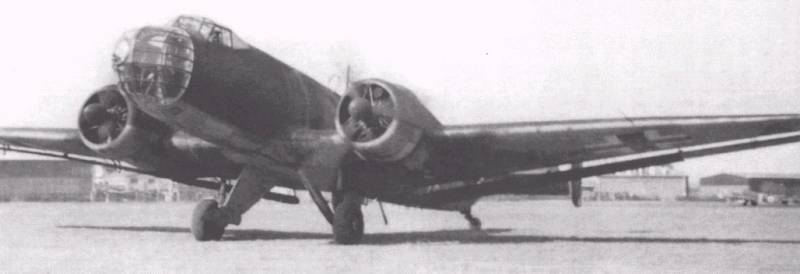
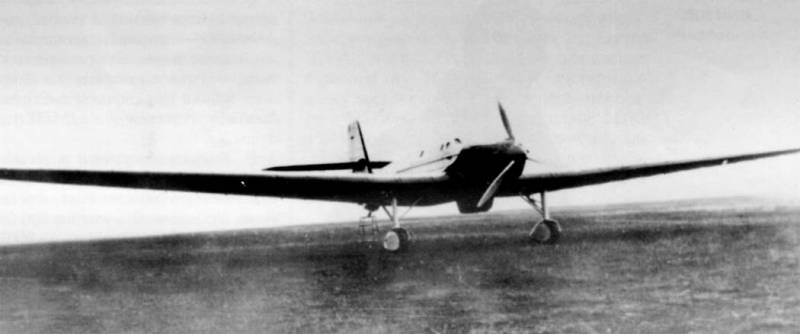
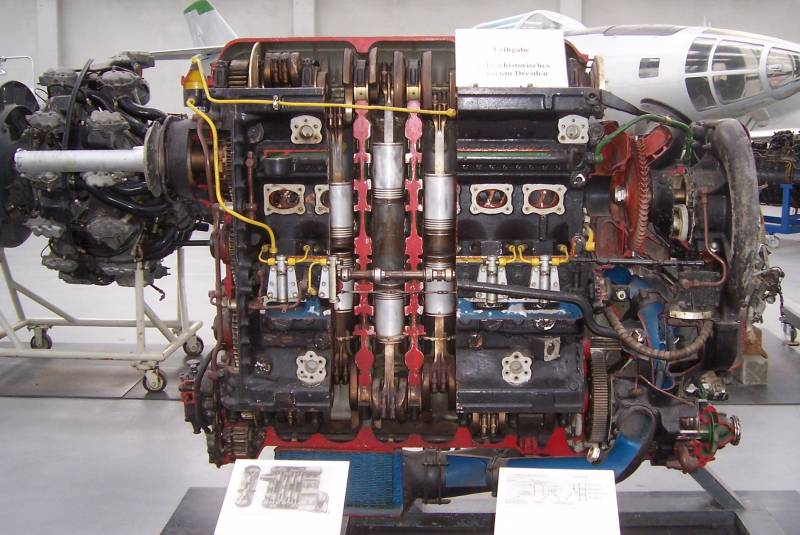
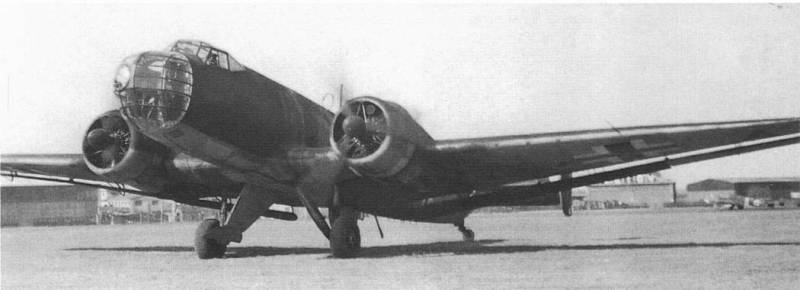
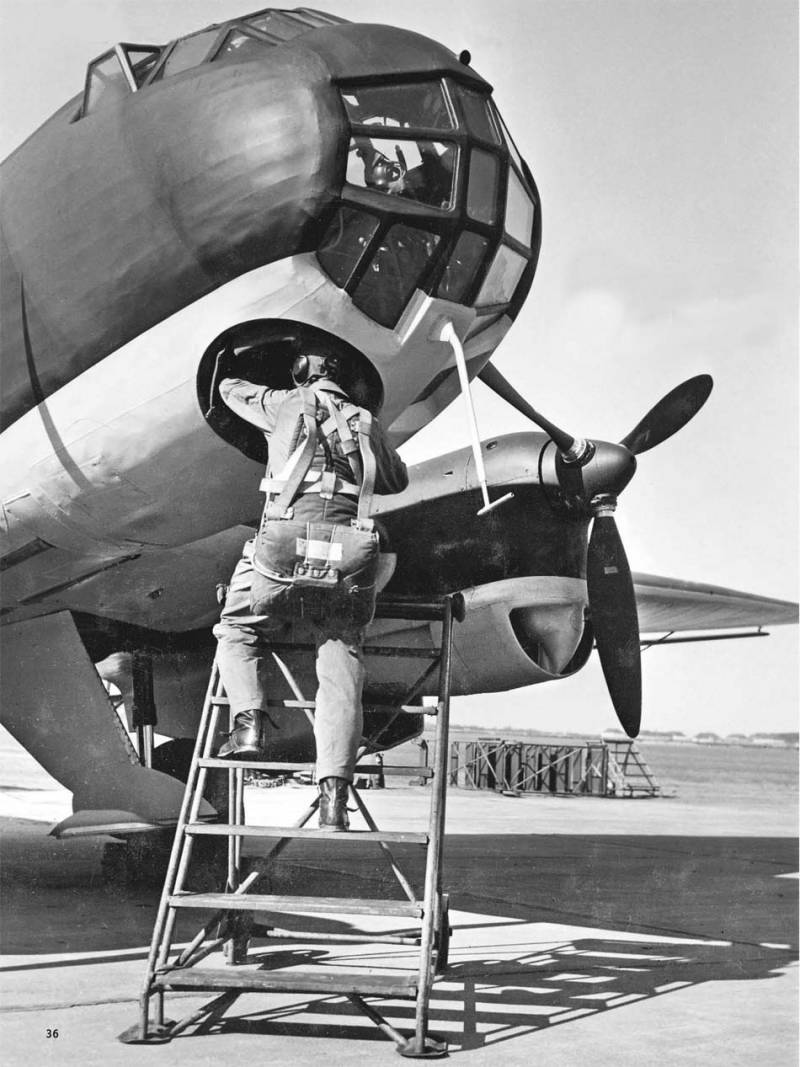

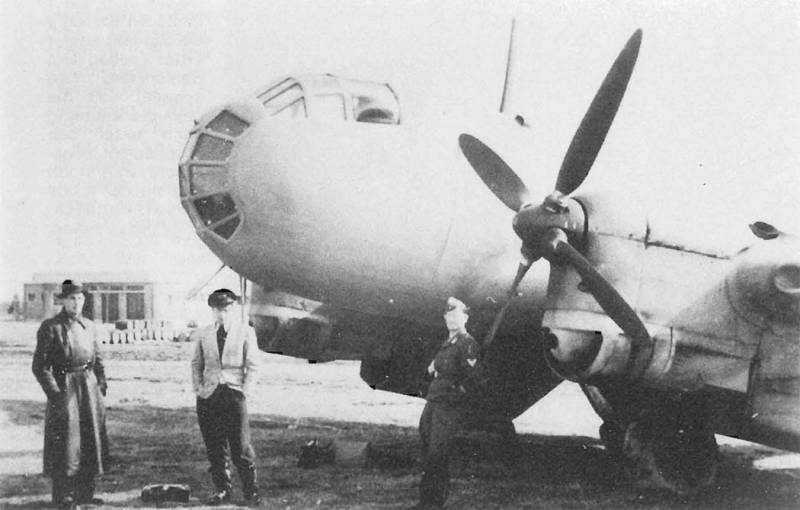
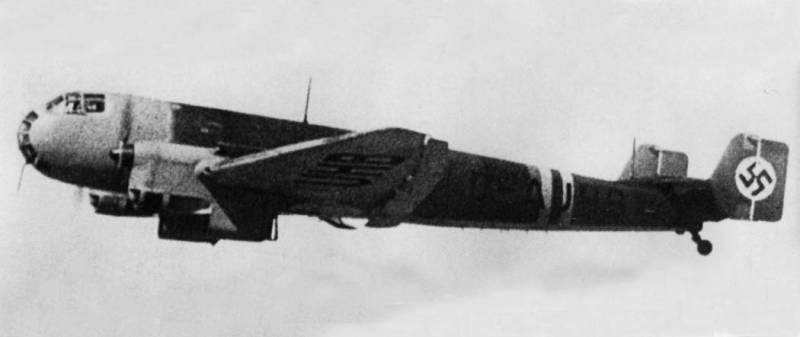
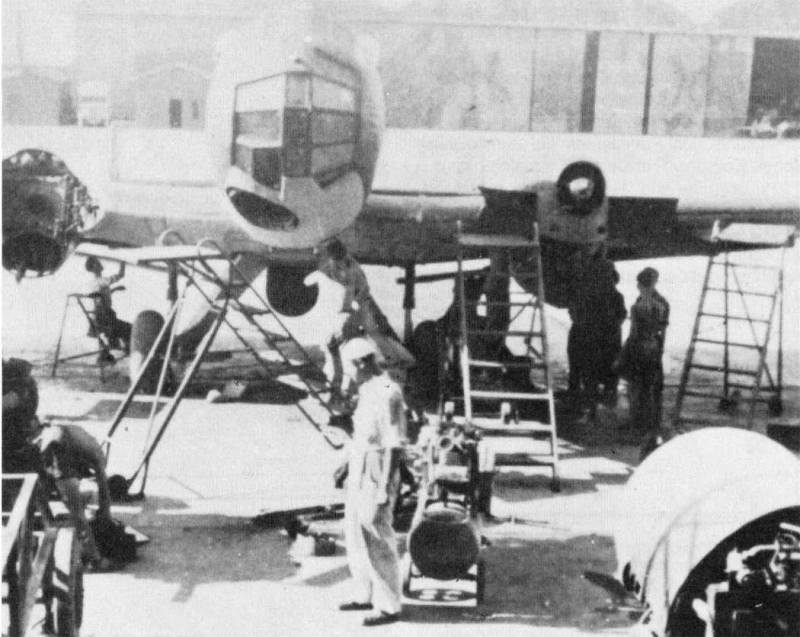
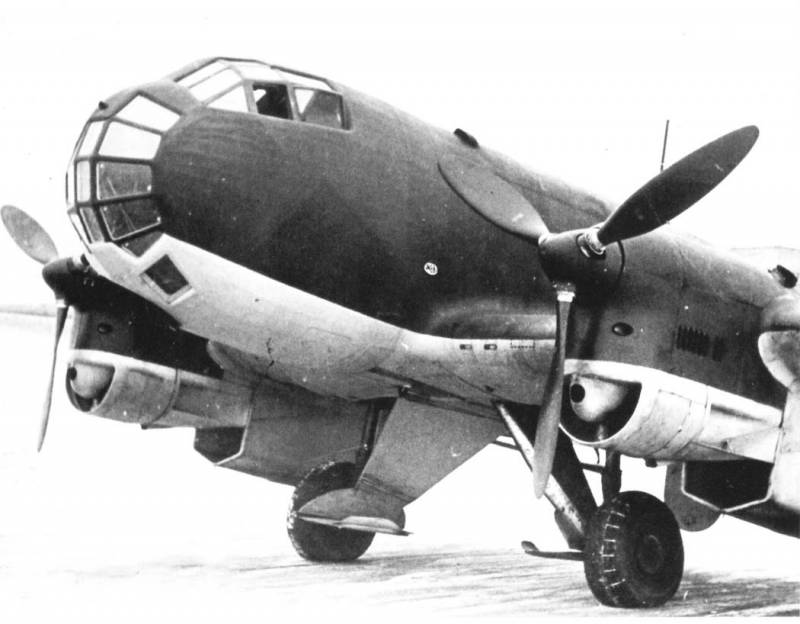
Information